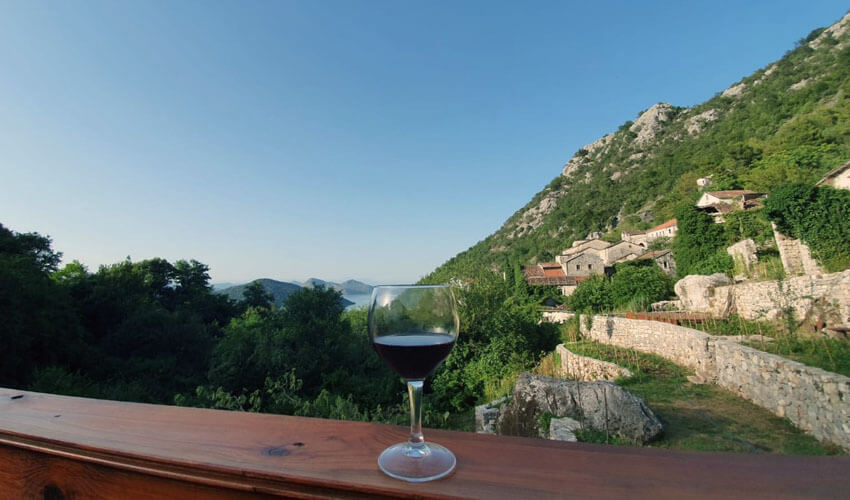Our Lady of the Rocks in the Bay of Kotor is unique in the world. There are few places where there is a smaller island and greater spiritual and material wealth. Everything that was created, from the island itself to every detail in the church and museum, is the product of special love, dedication and gratitude, and theo collections of votive paintings and silver votive plates are the largest in Europe.
Nothing like it anywhere, and has been made like the artificial island of Our Lady of the Rocks, which is located near the natural island of Saint George, on which there is a church of the same name from the 17th century. The two islands are the most beautiful part of the Bay of Kotor. These are the places you should visit, and once you come you will want to come back. You can visit Our Lady during all 12 months if the weather is nice.
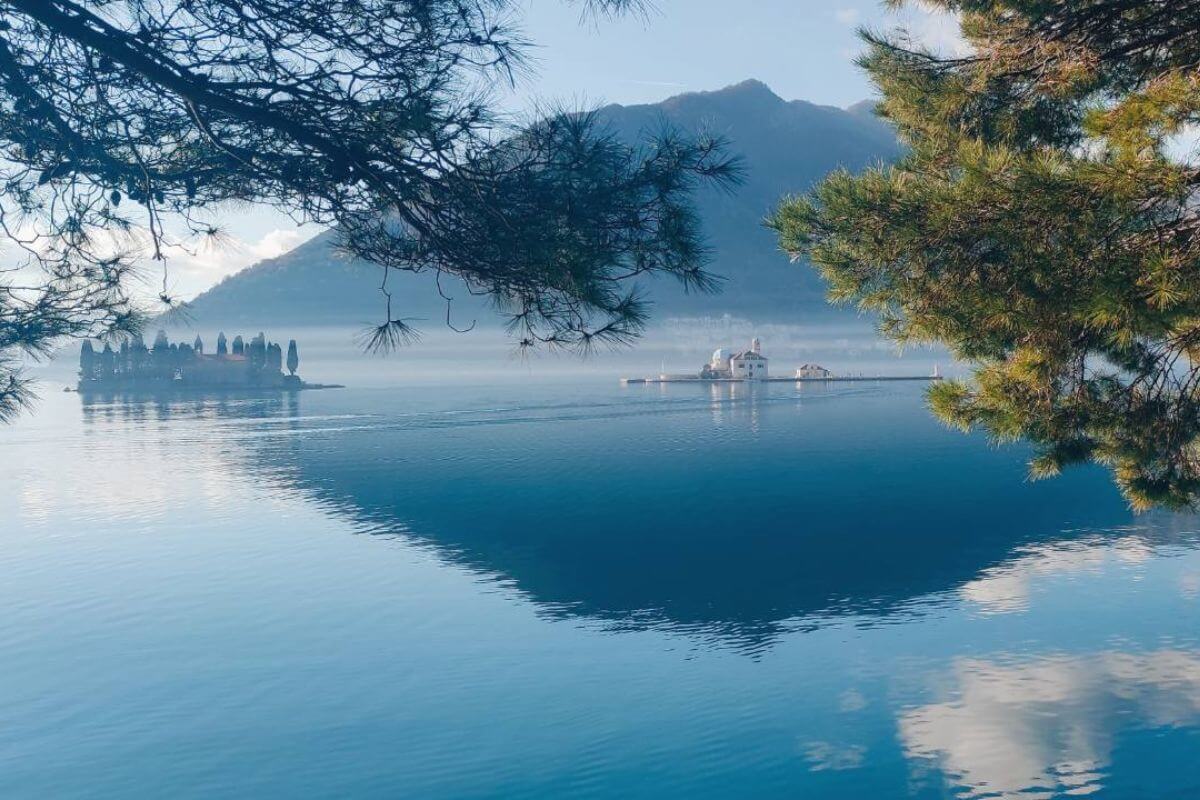
The two islands Our Lady of the Rocks and Saint George Photo: B. Dabić
The way it was created is unique in the world – more than 150 sailing ships were sunk
Our Lady of the Rocks (Our Lady of the Stone, rocks – in the archaic Bokelje skrpjel means rock, stone).
Legend has it – the Mortešići brothers found an icon of Our Lady on a cliff in the Risan Bay, opposite Perast, on July 22. One of them was sick. They took the icon home, prayed and the brother was healed. It was a sign to the people from Perast that the rock was looking for a church.
In the 15th century, the inhabitants of Perast decided to build a Roman Catholic temple dedicated to the Mother of God on that site. For 200 years, at a depth of 30 meters, the people of Perast have been sinking stones and old sailing ships that they seized in battles against the powerful Ottoman Empire. Over 150 sailing ships were sunk at that depth to create an island with an area of about 2,000 m2. The altar of the church is right on the rock where the brothers found the ico n.
The church was originally a small chapel, then a baroque Roman Catholic church.

For 200 years, the people of Perast have been sinking stones and old sailing ships to make an island Photo: B. Dabić
Votive place of sailors – a unique collection of silver plates
Even today, the place is a votive sanctuary of sailors from the Bay of Kotor, which has been known for its seafaring ever since. Seafaring, a difficult and risky business, made a living. Seafaring is still a tradition today, and this is the place for a ritual of gratitude.
In the most difficult moments at sea, sailors make vows and pray. The wonders of the sea are unpredictable. Often merciless in the battle between man and one of the greatest forces of nature – high sea and deep ocean waves.
If they are saved from a shipwreck, or a battle at sea… sailors come to the sanctuary of Our Lady of Rocks, and bring a votive gift – a gift of gratitude.

Sailor’s Votive plaques Photo: B. Dabić
The collection of over 2,000 silver votive plaques with nautical motifs and messages is unique in the world. There would have been more if it hadn’t been for the pirate raid in which around 500 silver votives and gratitude plaques were stolen. The oldest votive tablet is from 1654, which was presented to Our Lady by residents of Perast after the victory over a large Turkish army when they defended Perast. It is located on the right side of the altar. One of the last ones was passed at the beginning of September 2022, which means that the tradition has been going on for almost four centuries.
There are three motifs on the tiles – a ship in a storm, a ship in battles, or a part of the body that was sick.
It is interesting – On Gospa there is also a part of the JAT plane, which crashed on January 26, 1972, in what was then Czechoslovakia. It was presented to Our Lady by flight attendant Vesna Vulović, the only one who survived the fall, as a sign of gratitude and faith.
The works of the greatest Baroque painter and marble that can be seen in few places
There are 68 oil paintings in the church. All the paintings in the church are the work of the artist Trip Kokolj, one of the greatest Baroque painters from Perast. It took the artist 10 years to paint the complete church.
The pictures in the lower row tell about the lives of the Saints from the Old Testament, and in the upper row they depict the life of the Mother of God.
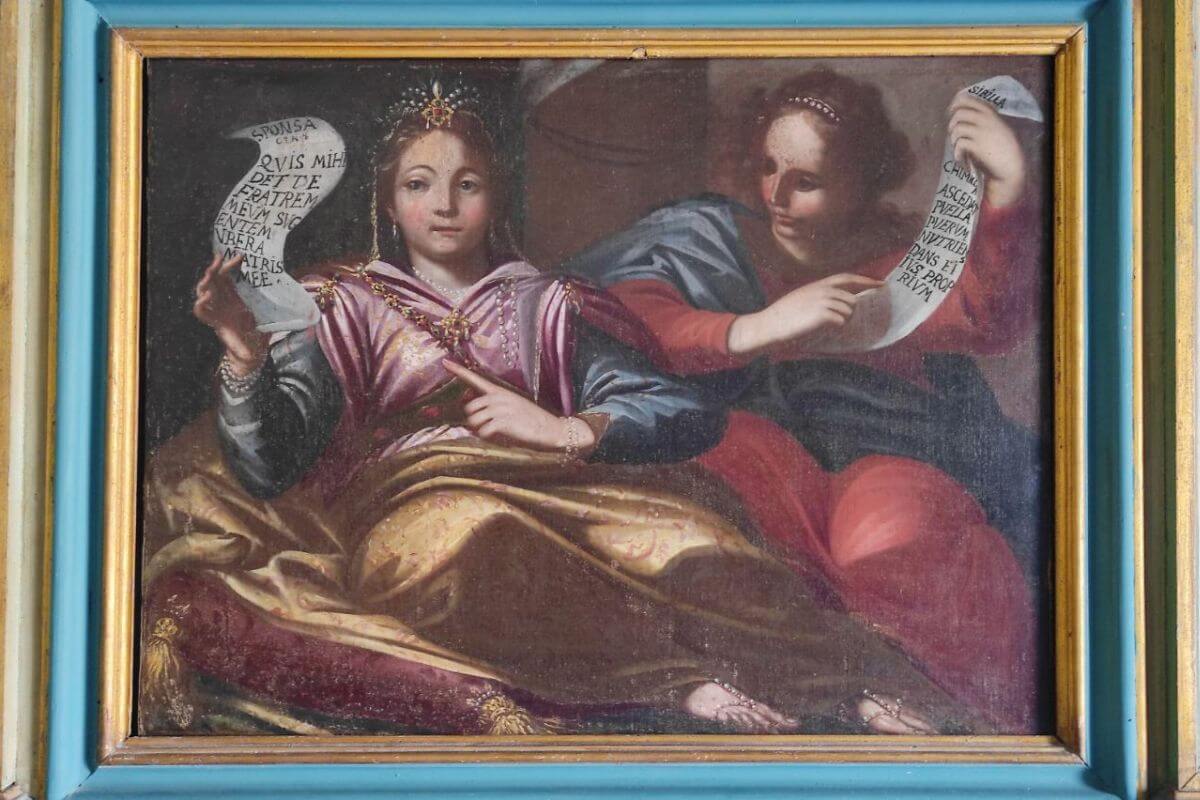
Baroque painter Tripo Kokolja from Perast decorate the church with 68 oil paintings Photo: B. Dabić
The altar was made in Italy by order of people from Perast in the 18th century. It was delivered to Perast by sailing ship. It contains four types of marble. Green, of exceptional value, originates from an island in southern Greece. That marble is no longer available except in buildings. A kilogram of marble was paid for with a kilogram of silver. The pink stone was bought in Egypt, the yellow and white in Italy.
The organ is 300 years old, the church is active and weddings, baptisms and masses are held there. International weddings are also held in the church. It is a tradition for the bride to present a bouquet to the church after the wedding.

Main altar, votive bouquets of flowers that brides leave after the wedding Photo: B. Dabić
A spiritual heritage that testifies to the events at sea – the largest collection in Europe
The museum is entered from the church. In the museum of Our Lady of the Rocks, there is a collection of 65 paintings – the largest collection of testimonies at sea in Europe. The motifs describe the experiences of sailors from Bokelje in the period from the 17th to the 20th century.
The pictures are a gift from the captain and describe the situation in which the captain found himself at sea. The captain is “recommended” to Our Lady, the protector of sailors, who helps him defeat a superior enemy or a natural calamity such as a storm.
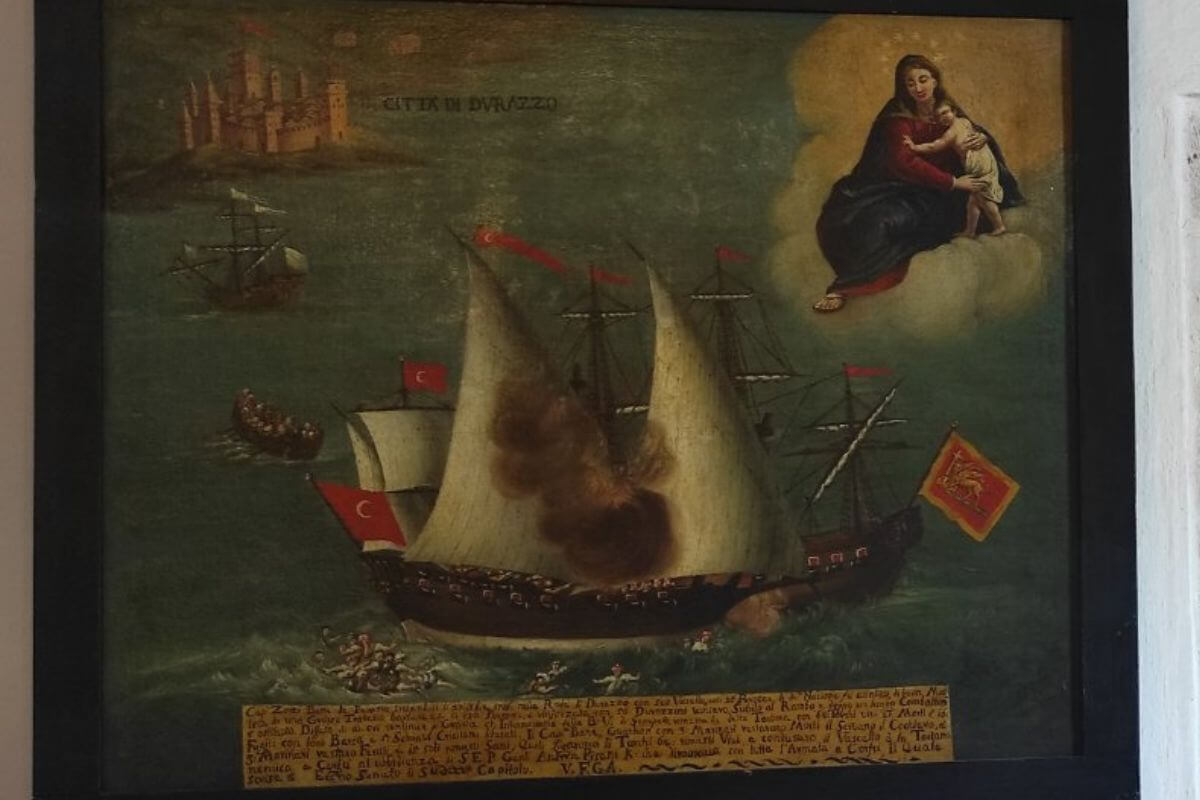
Votive image of a sailing ship Photo: B. Dabić
Specifically, on December 25, 1716, the ship sailed past Durres. There were 25 sailors on board, and 120 attacked them. They submit a report to the Corfu – Venetian base. The details are written on the picture itself.
The painters remained anonymous. Possibly the name of the ship or the captain is on the picture. Testimonies of faith are visible in all the pictures. It is a spiritual heritage that tells about sailors, their life, incidents at sea, and their faith in their powerful protector of the sea – Our Lady. The pictures are signed with initials
V.F.G.A – I asked for mercy and I received mercy.
In the museum, there is also a portrait of Trip Kokolj – the artist who painted the Old and New Testaments in the church. Everything in the museum is a gift, even archaeological excavations from the period of 3,500 years BC. then the Illyrian, Greek, and Roman period, and the traditional weapons of Peraštan from the 17th and 18th centuries.
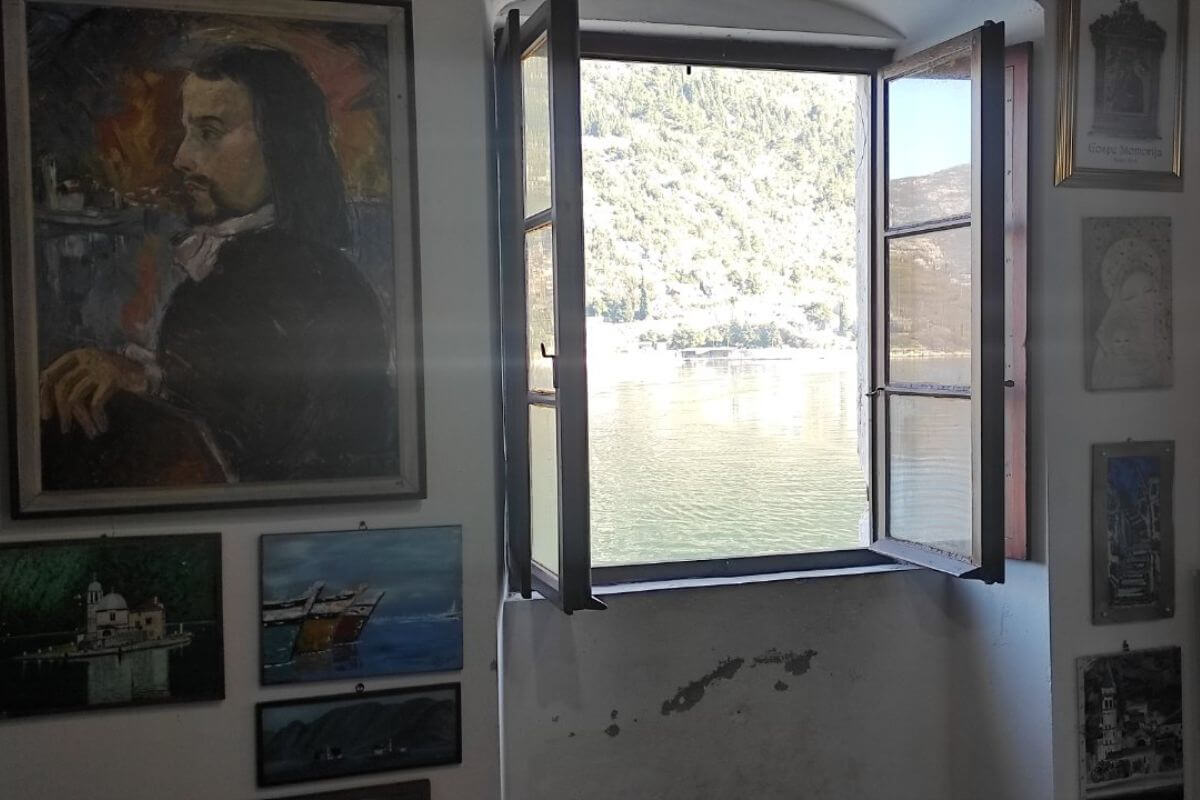
Baroque painter Tripo Kokolj painted the interior of the church on the island Photo: B. Dabić
In the museum, you can also see a 550-year-old chest, which is the oldest piece of furniture in the Bay of Kotor. Visitors leave money in different currencies.
Besides being the oldest piece of furniture, this chest is also a wish chest, so by inserting coins into it, visitors make their small vow to this place, with faith and hope that their wish will come true.
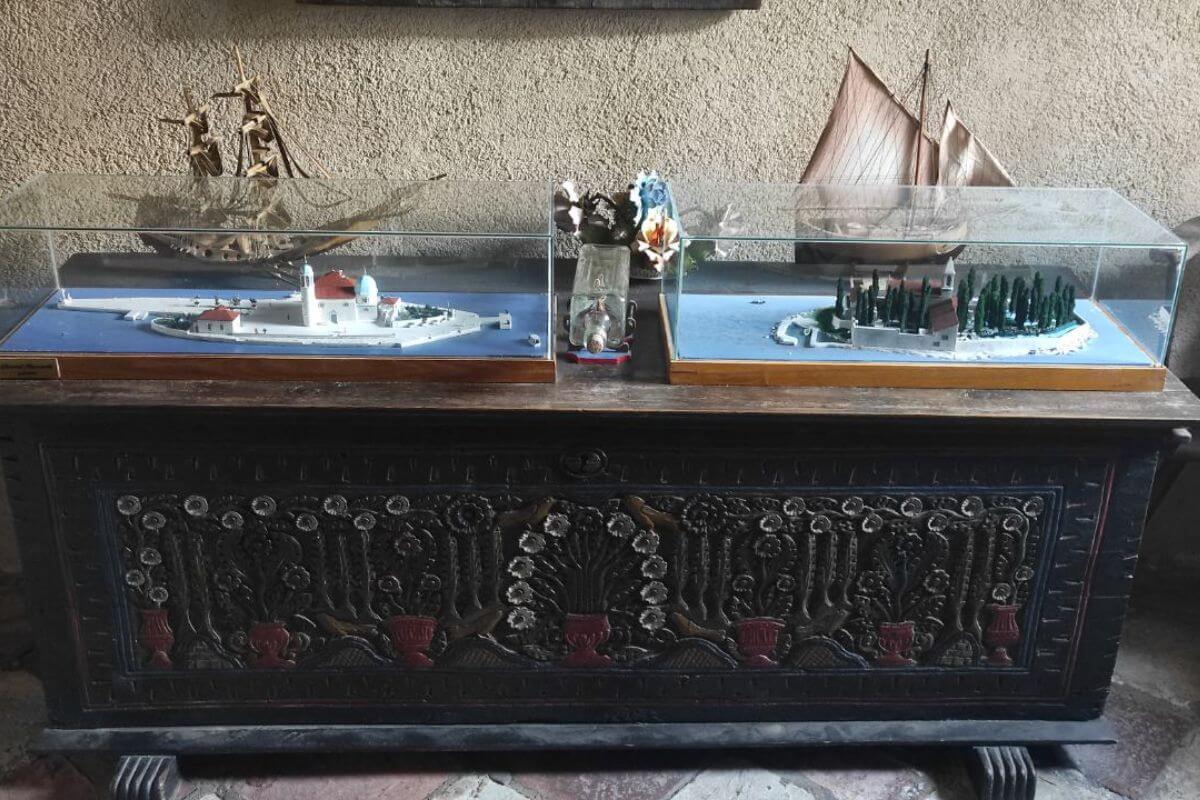
The oldest chest in the Bay of Kotor, over 500 years old Photo: B. Dabić
Needlepoint – testimony of hope and faithfulness
Tourists come from all over the world to see the artistic work of Jacinta Kunić, a native of Perast, who worked on the needlepoint for 25 years while waiting for her sailor husband, and according to some reports, eventually became blind. It is not even known whether her husband returned from his journey, after the fourth century of her waiting.
The needlepoint is a votive gift. It is also unique in that it is not a gift from a sailor, but a sailor’s wife. He went on a ship in 1803. She has been waiting for him for 25 years. It ends in 1828. To this day, it is not known what happened to the sailor. The motif of the tapestry is an icon. Technique – painting with a needle “punto pittura” and up to 650 stitches on one square centimetre. She worked under natural light and under candlelight. It had a scheme, an altar with a picture of Our Lady. The base is a special type of Japanese silk, which she decorated with gold and silver threads, and colourful Chinese silk. For linen, she used damast, which was highly valued at the time, then multi-coloured pearls, and she placed her own hair on the heads of the angels, Our Lady, and Jesus.
Time passed, the woman grew grey and the angel’s hair went from dark to gray. Jacinta Kunić, née Mijović, signed her name, completed the work in 1828, in the old Venetian language that was then official in Perast.
The tapestry is dedicated to the Virgin and it is believed that no one has made anything similar.
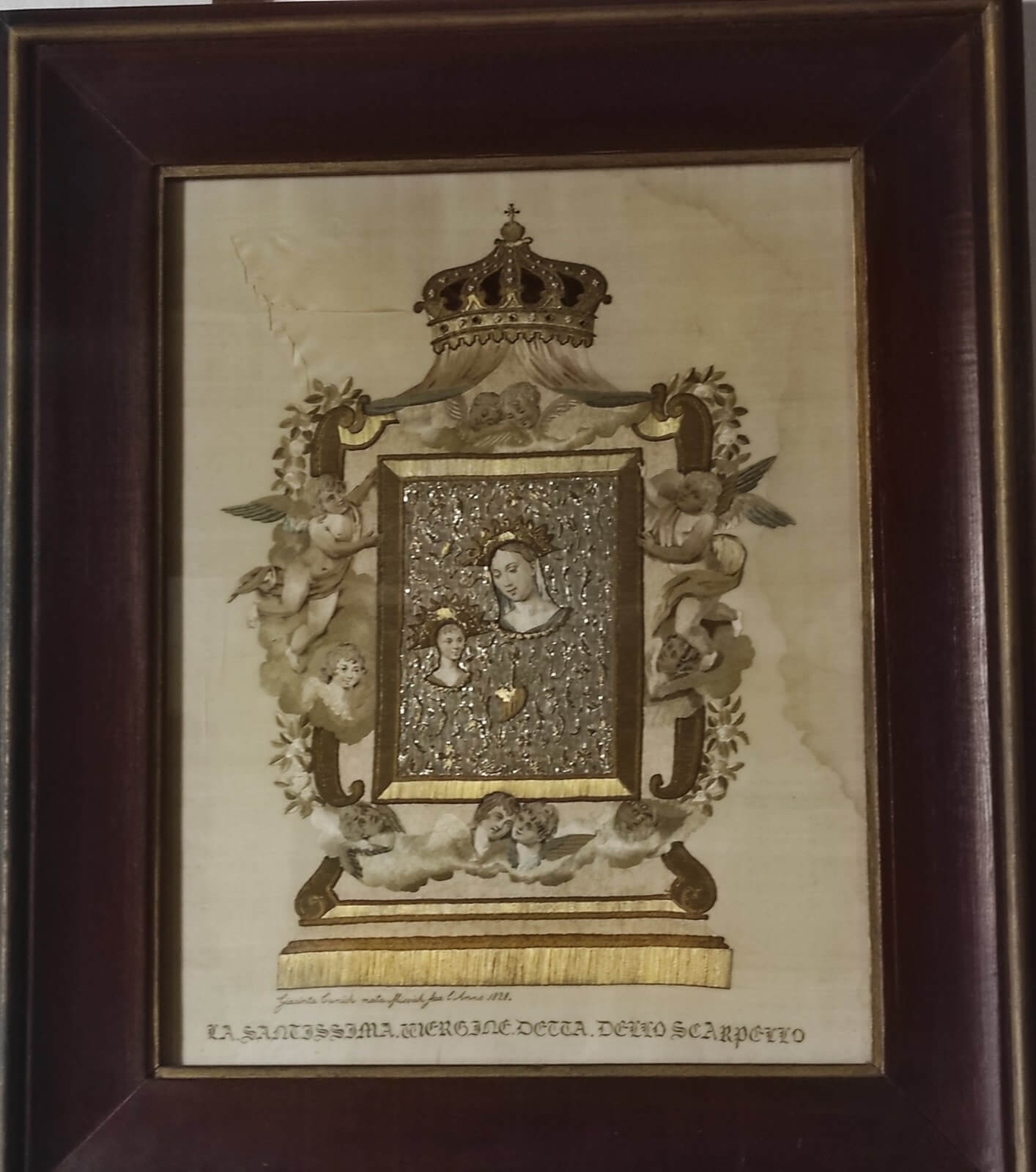
The needlepoint with the image of Our Lady in which Jacinta Kunić wove her own hair Photo: B. Dabić
A table from the House of Reconciliation
The table used to stand in front of a small house called the Reconciliation Hall, which is located opposite the entrance to the church.
In the past, the priest used to bring quarreling families, people who had disagreements and quarrels. If necessary, they would be locked up, sometimes even without bread and water until they reconciled. In the 17th century, it was located in a reconciled house. Peace was made at that table.
The large stone slab on the door and spine symbolizes the weight of the quarrel, the discord that man carries on his back.
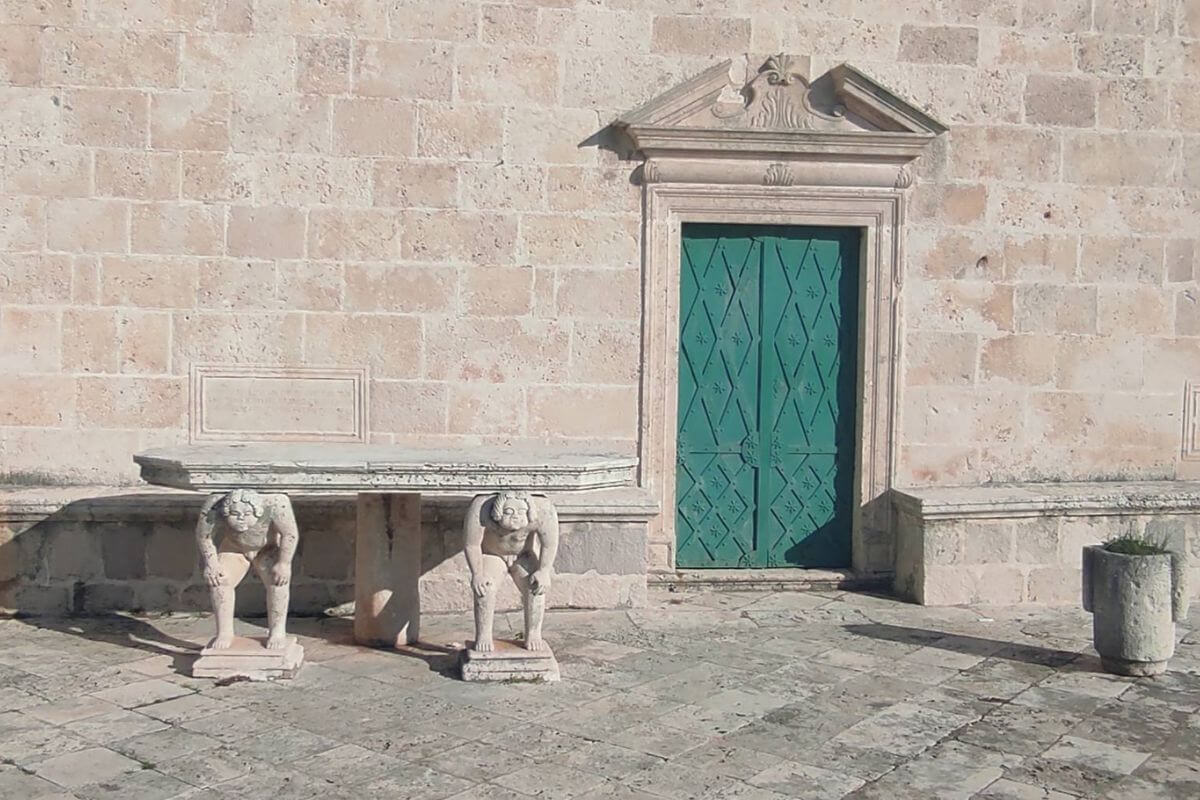
The table in front of the entrance to the church symbolically represents the burden that quarrelling people carry on their shoulders Photo: B. Dabić
Why do we return to Our Lady?
It is not possible to tell the story about the Our Lady of the Rocks to the end. No matter how many times you come, you will notice something that you did not see the previous time.
The place is mystical, divinely beautiful, with a special energy that radiates from the Bay of Kotor, where the mountain peaks are painted.
Once you visit Our Lady, you will understand why it deserves to come back. Three points are placed on the tour of Our Lady of the Rocks for a reason…
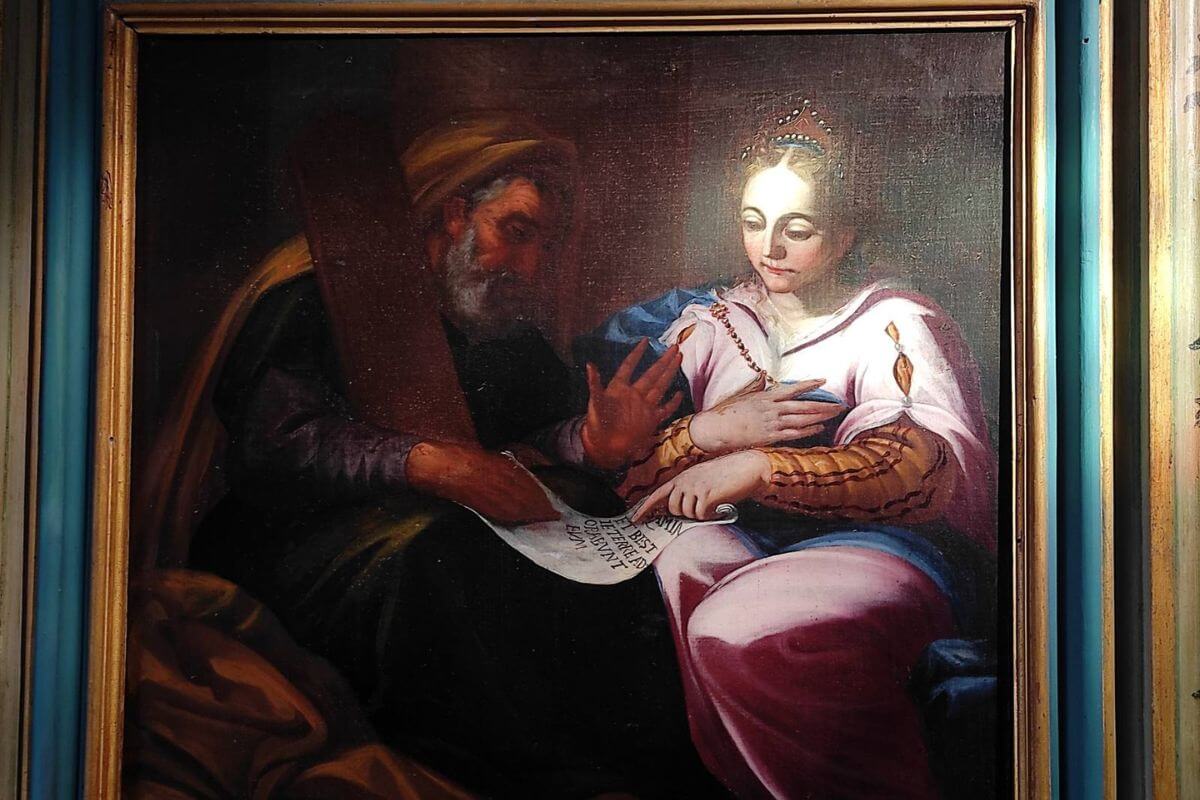
Tripo Kokolja – oil on canvas Photo: B. Dabić




